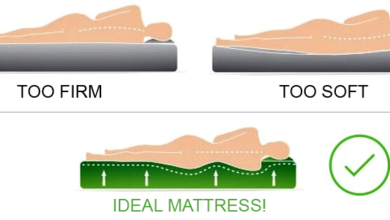The Psychology of Self-Defense: Understanding Fight or Flight

The human response to danger is deeply ingrained in our evolutionary history, shaping our behavior and decision-making in critical moments. When faced with a threat, our bodies instinctively engage in a physiological and psychological response known as “fight or flight.” This primal survival mechanism prepares us to either confront the danger head-on or flee to safety, depending on the perceived level of threat. In this comprehensive guide, we’ll delve into the psychology of self-defense, exploring the underlying mechanisms of the fight or flight response and its implications for personal safety. And yes, we’ll also discuss the role of Out-the-Front knives in the context of self-defense and the fight or flight response.
1. Understanding the Fight or Flight Response
The fight or flight response is a natural reaction triggered by the brain’s perception of a threat or danger. When confronted with a potentially harmful situation, the body releases a surge of stress hormones, including adrenaline and cortisol, to prepare for action. This physiological response triggers a cascade of changes throughout the body, including increased heart rate, heightened senses, and redirected blood flow to vital organs and muscles. These changes enable us to react quickly and effectively to perceived threats, whether by fighting off an attacker or fleeing to safety.
2. The Role of Fear and Anxiety
Fear and anxiety play a central role in the fight or flight response, serving as powerful motivators for self-preservation. Fear is an emotional response to an immediate threat, while anxiety involves apprehension and worry about potential future dangers. Both emotions can trigger the fight or flight response, activating the body’s stress response system and preparing us to react to perceived threats. Understanding the interplay between fear, anxiety, and the fight or flight response is essential for effectively managing stress and responding to dangerous situations.
3. Psychological Factors Influencing Response
Several psychological factors can influence how individuals respond to threats and activate the fight or flight response. These factors may include past experiences, personal beliefs, cultural norms, and individual differences in temperament and personality. Individuals with a history of trauma or violence may have heightened sensitivity to threats and a more pronounced fight or flight response, while others may be more inclined to freeze or become paralyzed in high-stress situations. By understanding these psychological factors, individuals can better prepare themselves to manage fear and respond effectively to danger.
4. Training the Mind and Body for Self-Defense
Effective self-defense training involves not only physical techniques but also mental preparedness and resilience. By training the mind to recognize and respond to potential threats, individuals can overcome fear and anxiety and act decisively in dangerous situations. This may involve practicing situational awareness, de-escalation techniques, and assertive communication skills to defuse conflicts and avoid violence whenever possible. Additionally, physical self-defense training can help individuals develop the skills and confidence to protect themselves if confrontation becomes unavoidable.
5. The Role of Out-the-Front (OTF) Knives in Self-Defense
Out-the-Front (OTF) knives are a popular choice for individuals seeking a reliable and discreet self-defense tool. With their swift deployment and razor-sharp blades, OTF knives offer a quick and effective means of deterring attackers and defending oneself in close-quarters encounters. The mere presence of an OTF knife can serve as a deterrent to would-be assailants, while the blade itself provides a versatile tool for cutting, slicing, and piercing in emergency situations. However, it’s essential to understand the legal implications of carrying and using an OTF knife for self-defense, as laws governing their use vary by jurisdiction.
6. Managing Fear and Anxiety in Self-Defense Situations
In high-stress situations, fear and anxiety can impair judgment and hinder effective decision-making. Learning to manage these emotions is crucial for maintaining composure and responding appropriately to threats. Techniques such as deep breathing, visualization, and positive self-talk can help individuals regulate their emotions and stay focused under pressure. Additionally, seeking support from trusted friends, family members, or mental health professionals can provide valuable guidance and encouragement in navigating fear and anxiety in self-defense situations.
Conclusion:
The fight or flight response is a fundamental aspect of human psychology, shaping our responses to danger and influencing our behavior in critical moments. By understanding the underlying mechanisms of this survival instinct and learning to manage fear and anxiety, individuals can better prepare themselves to respond effectively to threats and protect themselves in dangerous situations. Whether through psychological training, physical self-defense techniques, or the presence of tools like Out-the-Front (OTF) knives, cultivating a proactive mindset and building resilience are essential for enhancing personal safety and security. With the right knowledge, skills, and mindset, individuals can confidently navigate the challenges of self-defense and emerge from dangerous situations unscathed.



